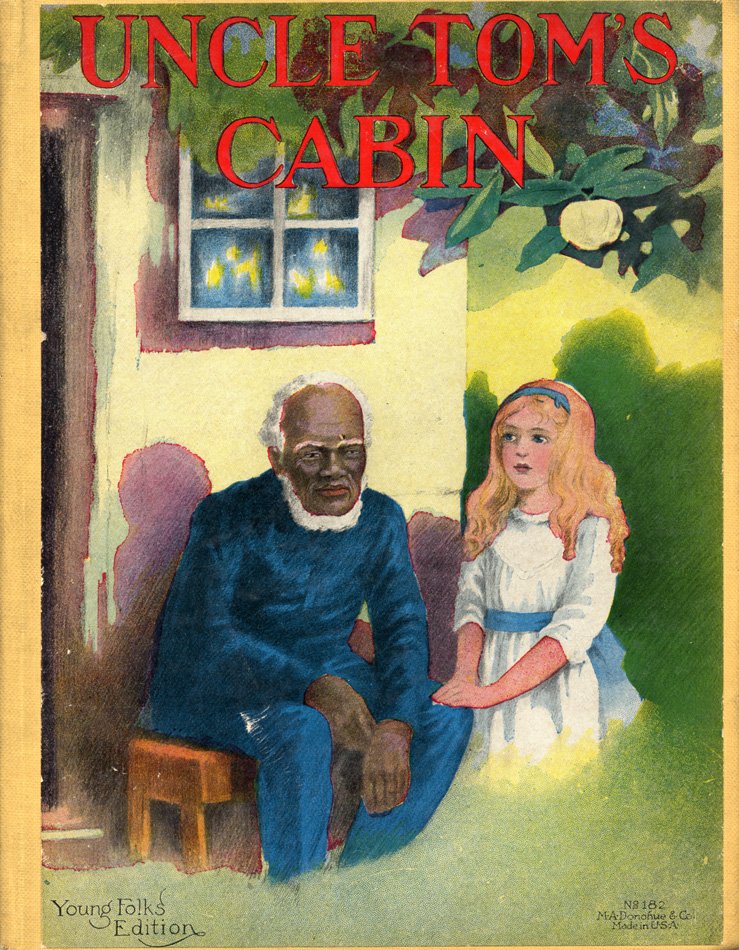Childhood
Children (and their parents) at the turn of the twentieth century were enticed into a new fantasy world of mass-produced playthings sold in mail order catalogs and spectacular department store displays. Of the colorfully illustrated and elaborately designed "gift books" that flooded this market, ones about African Americans were exceedingly popular and became staples of American childhood. In the illustrations and cover designs for Uncle Tom's Cabin, Uncle Remus, andLittle Black Sambo, children were addressed as "white" and welcomed into narratives that played on their sympathy, and their fear, of racial others.
Uncle Tom's Cabin
When it was published in 1855 to address the mounting political crisis over slavery, Harriet Beecher Stowe's abolitionist melodrama Uncle Tom's Cabinbecame a best-seller and an object of controversy. Its intense commercialization in games, toys, and especially elegantly illustrated gift books did not abate until well after the turn of the century. Focusing especially on the saintly white girl Eva and her relationship with the kindly slave Tom and the antic slave-girl Topsy, illustrated Uncle Tom books fashioned an innocent whiteness in relation to blackness at turns servile, martyred, and grotesque.
Uncle Remus
White Southerner Joel Chandler Harris framed his immensely popular animal tales of Brer Rabbit, Brer Fox, and Tar Baby as slave folklore passed down by a former slave to his beloved former master's son. Children found in Uncle Remusnot only a world that was a model of white innocence and black subordination, but also one that sanitized the history of slavery into an idyllic pastoral and safe arena for white fun—a nostalgic fantasy rendered by at least two generations of modern designers, from pioneering cartoonists E. Boyd Smith and E. W. Kemble to Walt Disney's animation studio.
Little Black Sambo
British author Helen Bannerman's Little Black Sambo was an American best-seller from the time of its first publication at the turn of the century, and remained a popular book in children's libraries well after World War II. Though ostensibly set in the "jungle" of a far-flung British colony, Little Black Sambo was immediately recognizable to Americans as an allegory of race and consumption. Turning a gang of threatening tigers into a whirl of butter, which he would later gobble down with an impossible amount of pancakes, Sambo was driven by a compulsive impulse to consume—desires white children could both identify with and displace onto the "primitive" black boy. Publishers in the 1940s and 1950s attempted to preserve the story of consumerism while diminishing its racist charge.The Golliwog
The Golliwog was invented by the American-born British author Florence Kate Upton, who was inspired by a "Negro minstrel doll" she and her siblings kept as a souvenir from their turn-of-the-century New York childhood. The Golliwog became the trademark of Robertson's Jam which marketed collectibles and novelties to children until 2002. Though made in Britain, these Golliwog figurines referenced their American origin in the style of a jazz band. Among the many racist collectibles found in white homes across the Atlantic in the twentieth century, they demonstrate not only the persistence of blackface iconography but also its elevation in the form of a beloved collectible.






